Sale-Leaseback: A real estate sales transaction in which the owner of a property sells the property to a buyer, and after the closing of title to the property, the seller then leases back all or a portion of such property from the purchaser.
Scaffolding Provision: A clause within a lease granting a landlord the right to install scaffolding and/or a sidewalk bridge on or adjacent to a building, generally without abatement of any kind to a tenant’s rent or constituting an eviction of any kind or nature. Consequently, sophisticated tenant advocates will negotiate language providing that a tenant will, among other things, be entitled to (1) a partial rent abatement if the sidewalk bridge and/or scaffolding remains in place for greater than a specified time period, (2) install signage on the scaffolding and/or bridge(s), often at landlord’s cost and (3) restrict the landlord from installing such sidewalk bridge and/or scaffolding during certain periods (e.g., the first six (6) months subsequent to the opening of a retail store).
Security Deposit Reduction: A provision in a lease permitting the amount of the required security deposit to decrease over time subject to specified benchmarks and conditions (e.g., “provided that this Lease is in full force and effect and Tenant shall not be in monetary or material nonmonetary default of this Lease (beyond the expiration of any applicable notice and cure period), then Tenant may provide to Owner, and Owner shall promptly thereafter execute and deliver to Tenant, if necessary, such instruments and authorizations as may be reasonably required by the issuer of the Letter of Credit to reduce the face amount thereof by $250,000.00 to $500,000.00 as of the first (1st) day subsequent to the fifth anniversary of the Rent Commencement Date”). This is also known as a “Burndown of Security Deposit or Burndown of Letter of Credit.”
Shell Space: A space premises that is unfinished, generally only having the structural portions complete, and as such will require the construction of improvements by the tenant prior to the tenant being able to operate its business in within the space.
Shopping Center Provisions: Provisions of a lease that are included as a result of the demised premises being a part of a shopping center. Such provisions are generally included by a landlord to maintain control of the tenant mix of the shopping center and/or to control how a tenant may operate its business in the demised premises. Tenants may also want to include certain provisions such as (1) an exclusive use provision to prevent other tenants in the shopping center from directly competing with tenant, (2) reserved or allocated parking spots, and/or (3) a right to terminate the lease or to receive a rent abatement if the anchor tenant for the shopping center is no longer operational.
Sidewalk Provision: A provision that may be included in a restaurant or other retail lease granting the tenant permission, subject to certain conditions and restrictions, to operate its business on the adjacent sidewalk (to have seating on the sidewalk or conduct sales on the sidewalk adjacent to the premises). The conditions and restrictions generally includes that tenant must comply with all applicable legal requirements with regards to using the sidewalk.
Signage (Clause): A clause that outlines the rights of a tenant in regards to the ability to place signs on its premises, the building and/or the property. Typically, tenants are permitted to place signage in the interior of its space on the door of or entrance to its premises. Subject to the terms and conditions of the lease and provided that all signs comply with all reasonable design, safety and construction considerations of landlord and applicable legal requirements, it is important for retail tenants to proactively negotiate exterior signage (and awning, if applicable) rights.
Soft Cost(s): Although associated with the use of a space and/or the building itself, a soft cost is an expense not considered to be a direct “hard” construction cost. Examples of soft costs include architectural, design and legal fees, permits, real estate commissions, movable furniture and furnishings, computer data equipment, telephone systems and advertising, insurance and moving costs. Also see “Hard Costs.”
Space Plan or Design Plan: A plan which lays out, hopefully in an optimum nature, how the interior of the demised premises is going to be laid out before constructing the build-out. It is imperative that a tenant makes sure that the space is the right fit for them before even entertain taking a certain space. Also see “Test Fit.”
Specialty Alteration(s): Alterations or improvements that go beyond “ordinary” alterations, such as raised floors, vaults, filing systems, internal staircases, dumbwaiters, pneumatic tubes, vertical and horizontal transportation systems and any alterations which are essentially structural in nature or penetrate any floor slab in the premises. In addition, they could also be deemed to include any textured mirrored and/or decorative walls ceilings or floors (and to some landlords, kitchens, private bathrooms and/or showers). Also see “Alterations.”
Stacking Plan: A two (2) dimensional representation of a building that detailing not only the space available on each floor of the building, but just as importantly, all occupied space in a building and the lease expiration date for such spaces.
Storefront: The “ face” of a store on the ground floor of a commercial building.
Sublet | Subletting | Subleasing | Sublease: An agreement wherein a tenant leases all or a part of its space during the term of its lease to a third party. In the event of a sublease, the tenant is referred to as the “sublandlord” or “sublessor” and the person or entity subletting the space is called the “subtenant” or “sublessee.” A lease should always include conditions and restrictions with regards to a tenant’s right to sublease its space, generally requiring with limited exceptions, the landlord’s consent to any sublet. Also see “Partial Sublet(s).”
Submeter | Submetered | Submeters: Where the owner of a building purchases electric current or water for the entire building and charges the tenant, based on landlord’s actual cost or quite often on a cost standard higher than landlord’s actual cost, for its consumption by way of readings measured by a “submeter.” Also see “Submeter Administrative Fees” and “Submeter Installation.”
Submeter Administrative Fees: The fee a landlord charges a tenant to read and/or maintain a submeter(s) installed in the tenant’s demised premises (which fee in most leases is generally above the landlord’s actual cost to do so). From a landlord’s perspective, the use of submeters as a means of measuring a tenant’s electric or water consumption can act as a profit center. By way of example, in many commercial leases, it is not uncommon to find a five percent (5%) to fifteen percent (15%) surcharge added to the cost of a tenant’s electric or water bill to cover not only the cost to the landlord of having the meter read by a third-party, but also to cover what landlords like to refer to as their “administrative fees.” If a tenant is confronted with an excessive administrative fee, that tenant should do its best to have it either eliminated or reduced to no greater than a five percent (5%).
In addition, a tenant should negotiate that the rate on which the 5% administrative fee is added on to should be based upon the landlord’s actual cost of purchasing electricity as opposed to a rate that contains a built-in profit center for the landlord.
Submeter Installation: When a submeter is installed in a demised premises to measure a tenant’s individual electric or water usage. If a submeter needs to be installed in a tenant’s space, landlords should attempt to have the submeter(s) installed at tenant’s cost.
Subordination and Non-Disturbance Attornment Agreement (“SNDA”) | Subordination and Attornment: In its simplest form, a SNDA (better known to some as a “subordination and non-disturbance attornment” agreement) is a document wherein the lender will agree that the tenant’s occupancy will remain undisturbed (and as such its lease not terminated), notwithstanding the foreclosure of the landlord’s mortgage or termination of the landlord’s ground lease.
Subordination | Subordination Clause(s): A clause which states that when a landlord’s mortgage is foreclosed on by its lender or a ground lease against the building is terminated by a ground lessor due to a landlord’s uncured default, in such an event, the lender or the ground lessor would have the option to recognize the tenant’s lease and have the tenant attorn to it, or alternatively, terminate such lease. Also see “Attorn” and “Subordination and Non-Disturbance Agreement (“SNDA” or “NDA”).”
Substantial Completion | Substantially Complete: In a commercial lease, it is the stage of construction when the work agreed to be performed has in fact been completed to the point that, notwithstanding the fact that minor or insubstantial details of construction, demolition, mechanical adjustment, decorative items and/or other “punch list” items remain to be performed, such unperformed work will not materially adversely interfere with tenant’s use and occupancy of the demised premises for the operation of tenant’s business therein. In many jurisdictions, the issuance of a temporary certificate of occupancy will be required as a condition of substantial completion. Also see “Punch List.”
Substitute Space: The alternative space a landlord provides a tenant when relocating a tenant’s space during the term of the lease. If the landlord has the right to relocate a tenant based on a relocation clause in the lease, tenants should negotiate to also include in the lease certain minimum requirements for the substitute space (such as reimbursement of costs associated with the relocation, whether or not the rent will increase if the space is larger than the tenant’s original space, the minimum size of (and required finishes to) the substitute space and what location within the building or shopping center the substitute space can be. Also see “Relocation | Space Relocation.”
Sunrise Provision: A provision of a lease which only becomes effective after a specified period of time or as of a certain date. An example of a provision considered to be a “sunrise provision” is an early termination clause wherein the party with the right to terminate the lease before the end of the full term can only do so an agreed upon number of years after the commencement date.
When negotiating, agreeing to a “sunrise provision” is often used as a middle ground compromise between a landlord and a tenant when the landlord is requiring that a particular provision be included within a lease when a tenant wants that clause deleted from the lease.
Sunset Provision: A provision of a lease which, after a specified period of time or as of a certain date, is no longer considered in full force and effect. An example of a provision considered to be a “sunset provision” is when a tenant has to pay back the unamortized portion of any free rent and/or brokerage commissions only if the tenant is in default of the lease during the first three (3) to five (5) years of the lease term.
When negotiating, agreeing to a “sunset provision” is often used as a middle ground compromise between a landlord and a tenant when the landlord is requiring that a certain provision be included within a lease when a tenant wants that clause deleted from the lease.
Supplemental HVAC | Supplemental Air Conditioning: Generally installed by a tenant (or a landlord on behalf of the tenant) at the tenant’s sole cost and expense, and is generally installed in conference rooms, server rooms and partner offices.

